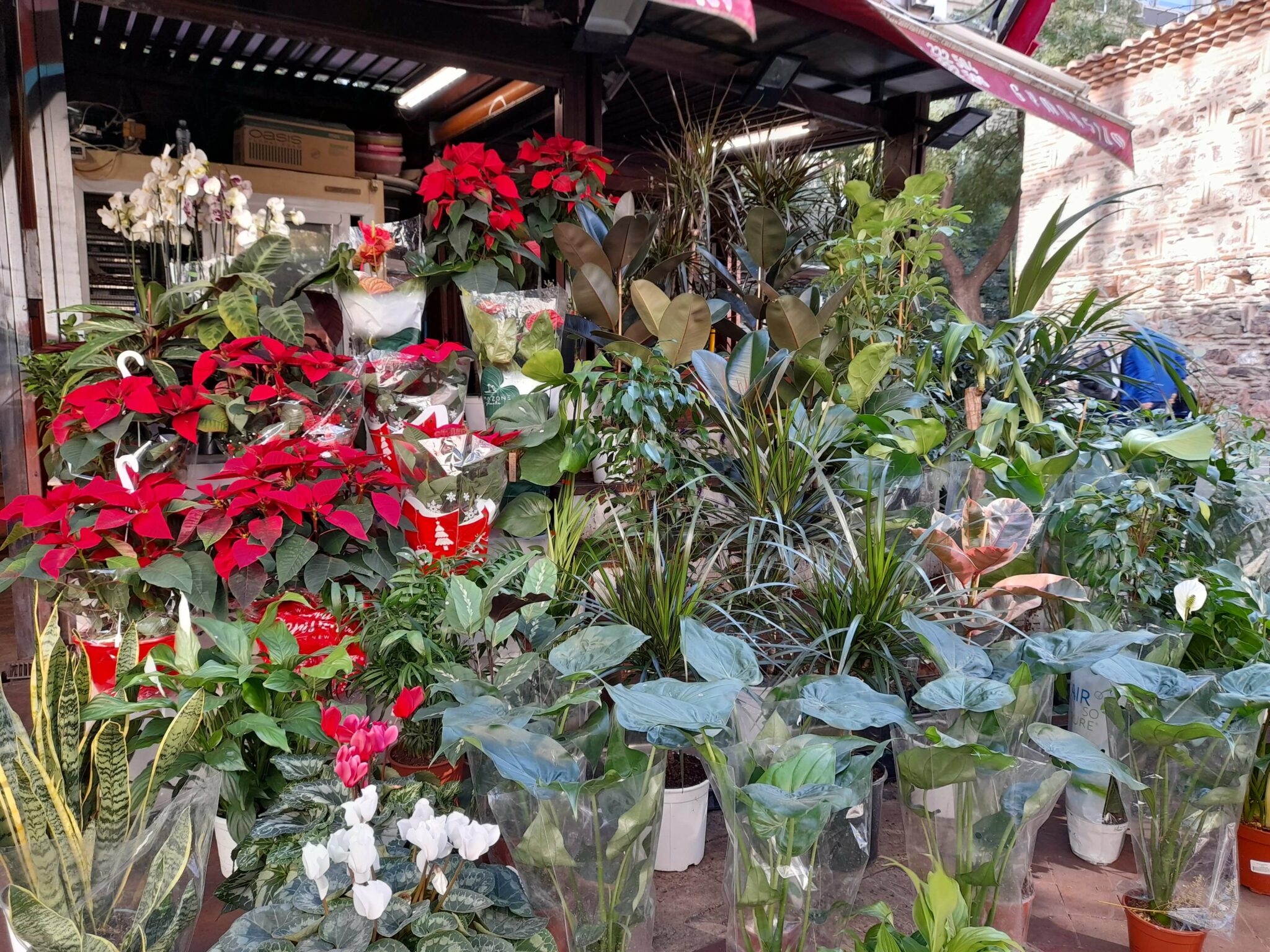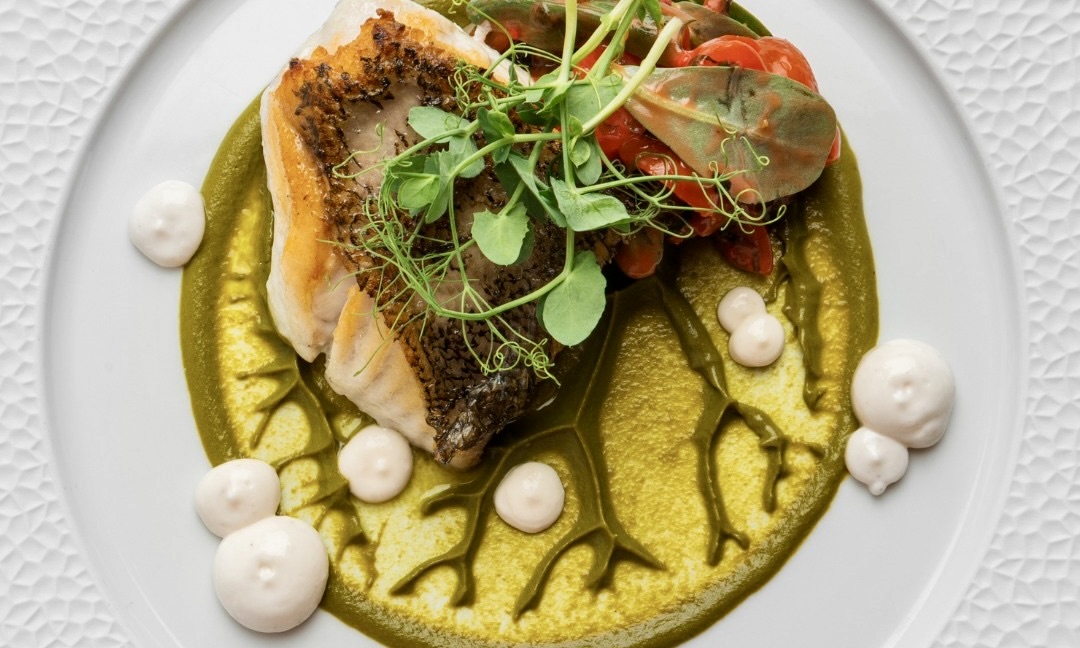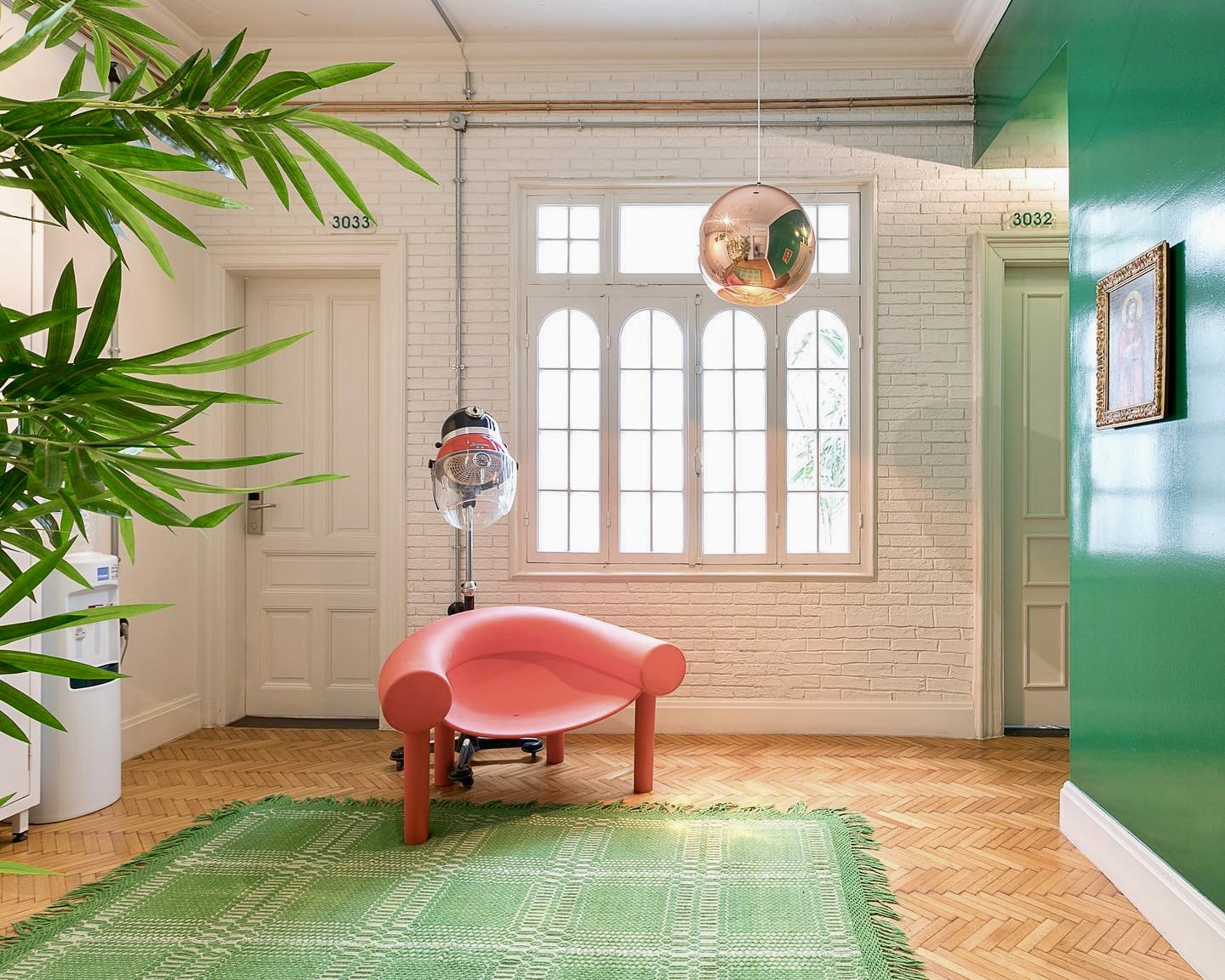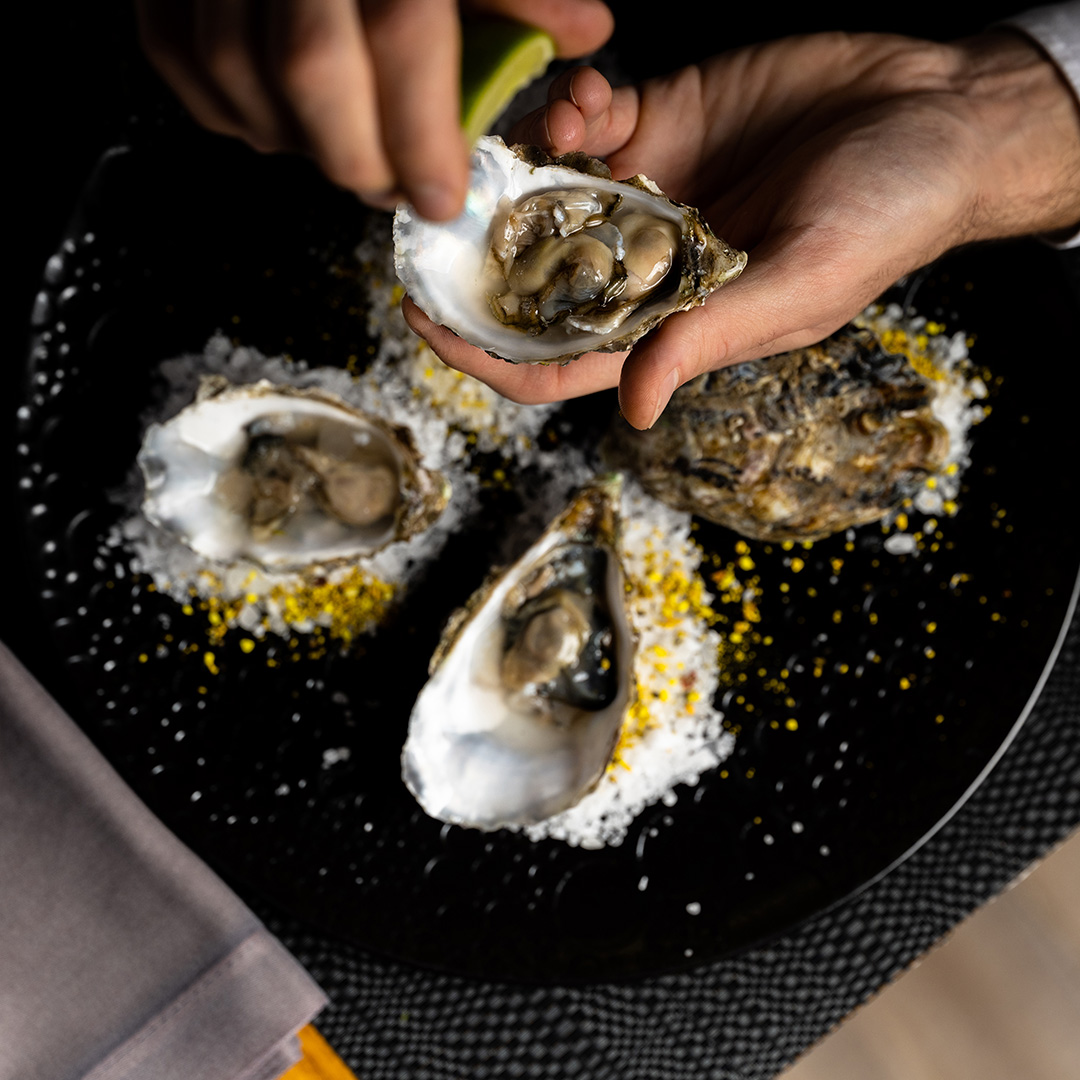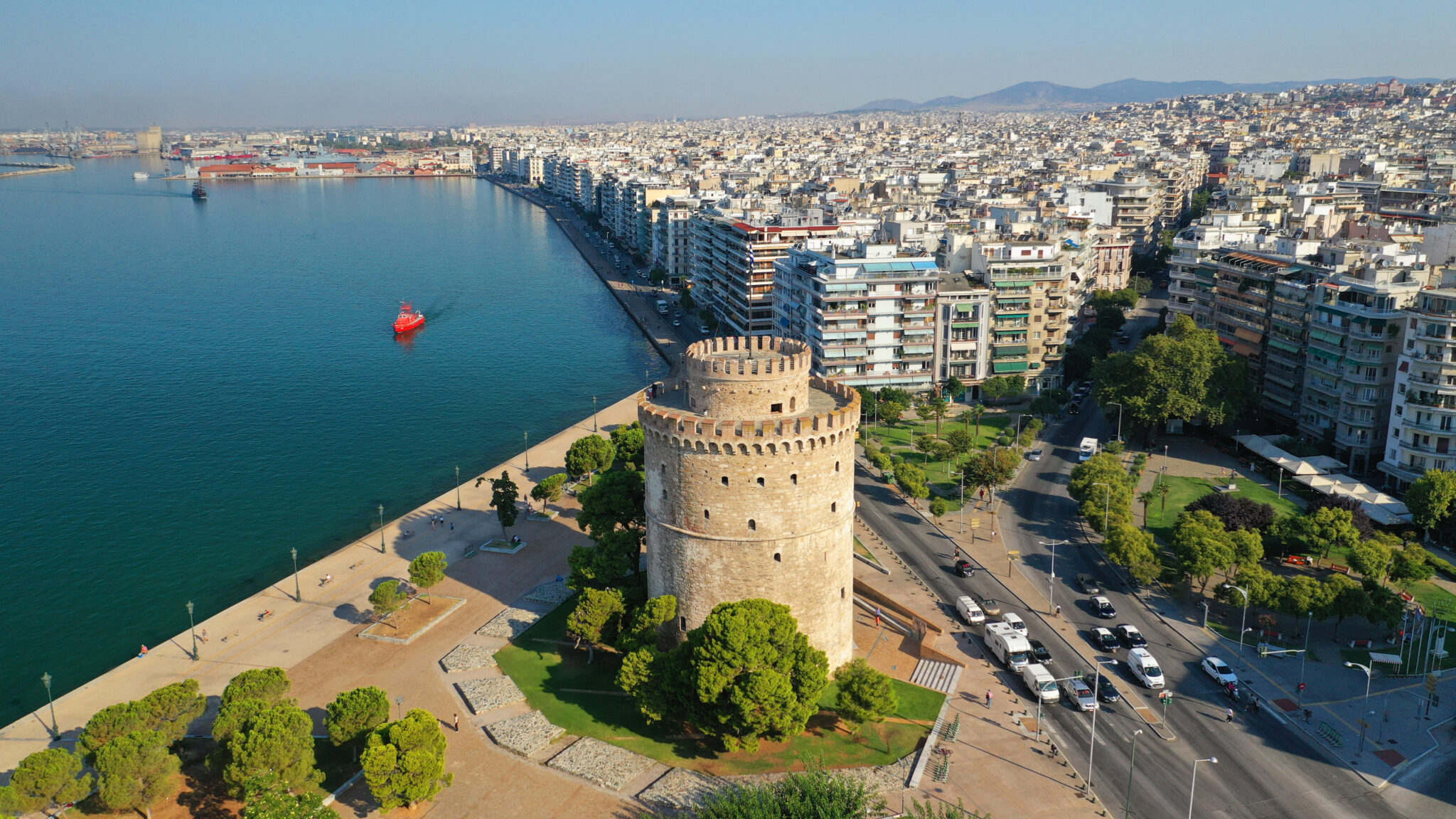A bouquet of spring hyacinths when Victoria was born. A bouquet of roses for Nikos’ graduation. Each autumn chrysanthemums for all the Dimitrises celebrating their name day. A rare bouquet with ivy and laurels for a wedding at Agia Sofia church, nearby. And many many meetings “at the flower shops”.
Meetings to go for a walk around the shops, to go grab a bite at the taverns in Modiano, to go for a tea at Zogia, or go for hookah at the historic Orient. The flower shops on the corner of Vasileos Irakliou and Komninon streets is one of the most colourful and most fragrant spots in the centre of Thessaloniki.
Next to the central enclosed market, the famous Modiano, whose renovation will be completed soon, and next to one of the most beautiful hammams still standing in town, four “kiosks” with flowers are writing their own history, for decades now, in the centre of Thessaloniki.
The Market Hammam
The story of the flower shops is closely linked to the Yahudi Hammam. Yahudi means Jewish, and many claim it was indeed the town’s Jewish Hammam. Others say that it was called that because it was built in the Jewish neighbourhood of Thessaloniki. It was built between the end of the 15th century and the beginning of the 16th century and it was known as Pazar Hammam (the market hammam) or Pazari Kebir Hammam (the hammam of the great market) or Halil Aya Hammam from the name of its founder.
The hammam includes two separate buildings, one for the women and the northern and larger one for the men. It’s built of stones and bricks and there is a strong Byzantine influence on its architecture.
Even today, cramped between six-storey blocks of flat, its ceiling, with the 15 domes with small glass openings for natural light remains impressive.
Until 1912, the year Thessaloniki was liberated from the Ottoman rule, the hammam was in operation. The great fire that broke out in the city in 1917 caused a lot of damage and after the Second World War, its original form was gradually altered.
Street flower sellers
So, in the hammam neighbourhood, dozens of flower sellers with carts, sold. for decades, flowers they’d cut from the fields around the city. In 1952, under the initiative of the then Minister of Northern Greece, Leonidas Iasonidis, the street vendors were allowed to set up stalls that were built around the hammam’s walls. Nearly half a century later, in the 90s, and as Thessaloniki was having some work done due to being selected as European Capital of Culture 1997, the flower shops had to be removed so that the hammam could be restored.
This was another point in history when life and daily activities and monuments and their restoration were on opposite sides.
After the necessary negotiations, the Solomon-like solution was reached in which both the monument would be given prominence and the flower shops would remain in the wider area. In essence, a cobbled square was created where the Ottoman monument, the flower shops and some cafés all co-exist.
The four musketeers
Of the eleven flower shops, now only four blooming (pun intended) businesses remain, keeping the tradition, preparing celebratory bouquets for the people of Thessaloniki, giving shape and colour to apologies, congratulations and goodbyes. All of them now also have an e-shop, and even during lockdown they brought flowers to the citizens of Thessaloniki. Ms Anastasia from the “Ioannidis” flower shop gives us advice on how to take care of the poinsettia “so that they can bloom after the holidays as well”, while she makes a yellow rose bouquet.
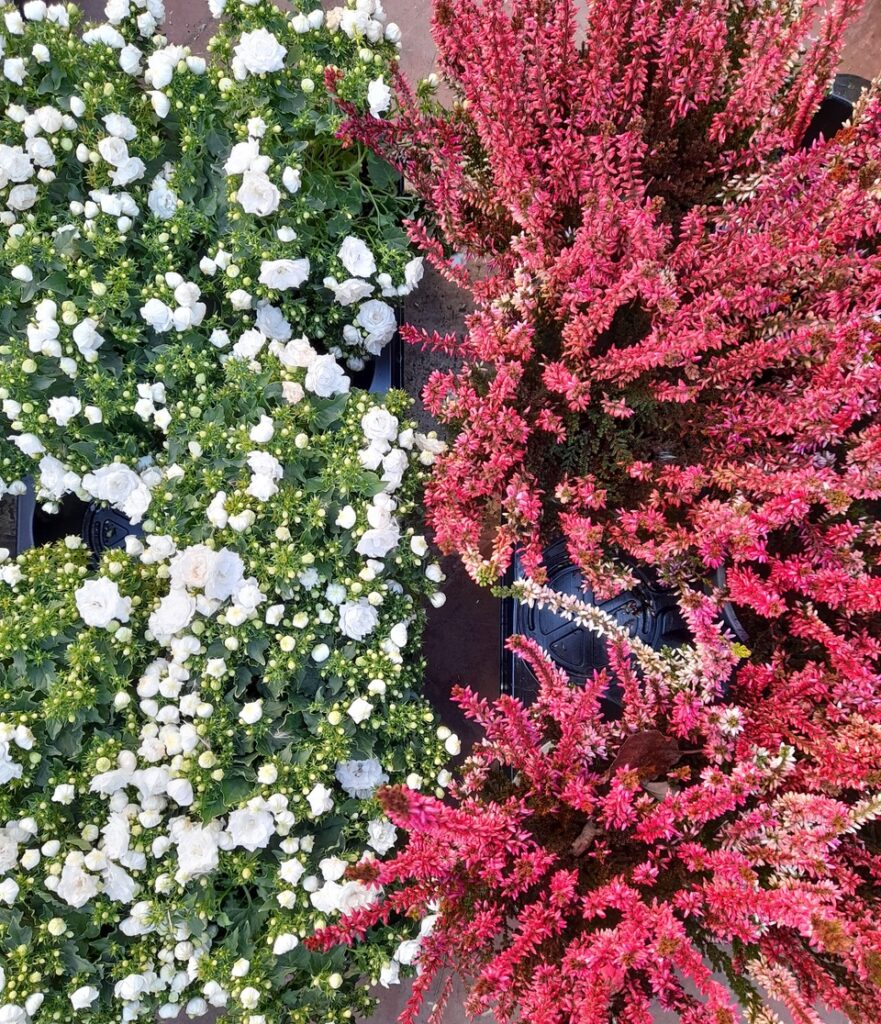
Snow white and bright red winter blooms
She spent her whole life among flowers, and she tells us about her daughter who set up a nursery only for potted flowers in Korinthos with joy and pride. Mr Kostas from the flower shop “Christos” is making a holly bouquet and talks about the past glory of the flower shops. While he takes care of some fresh dahlias in a pot, he smiles as he tells us that many romances have started with one of his bouquets.
Everyone gives us advice on how to take care of our plants, tell us strange names, and stories about one of the noisiest neighbourhoods in the city. And every single one of them tells us about the joy of living and working among such beauty.



